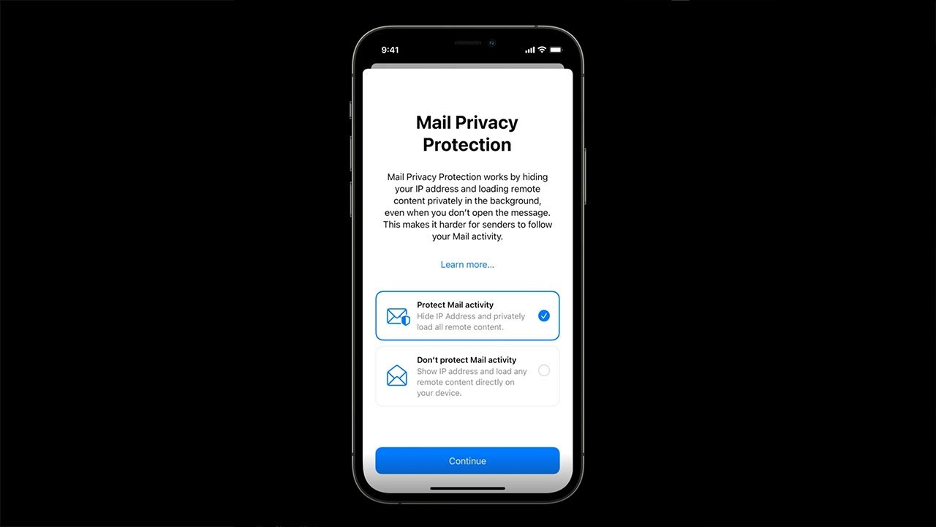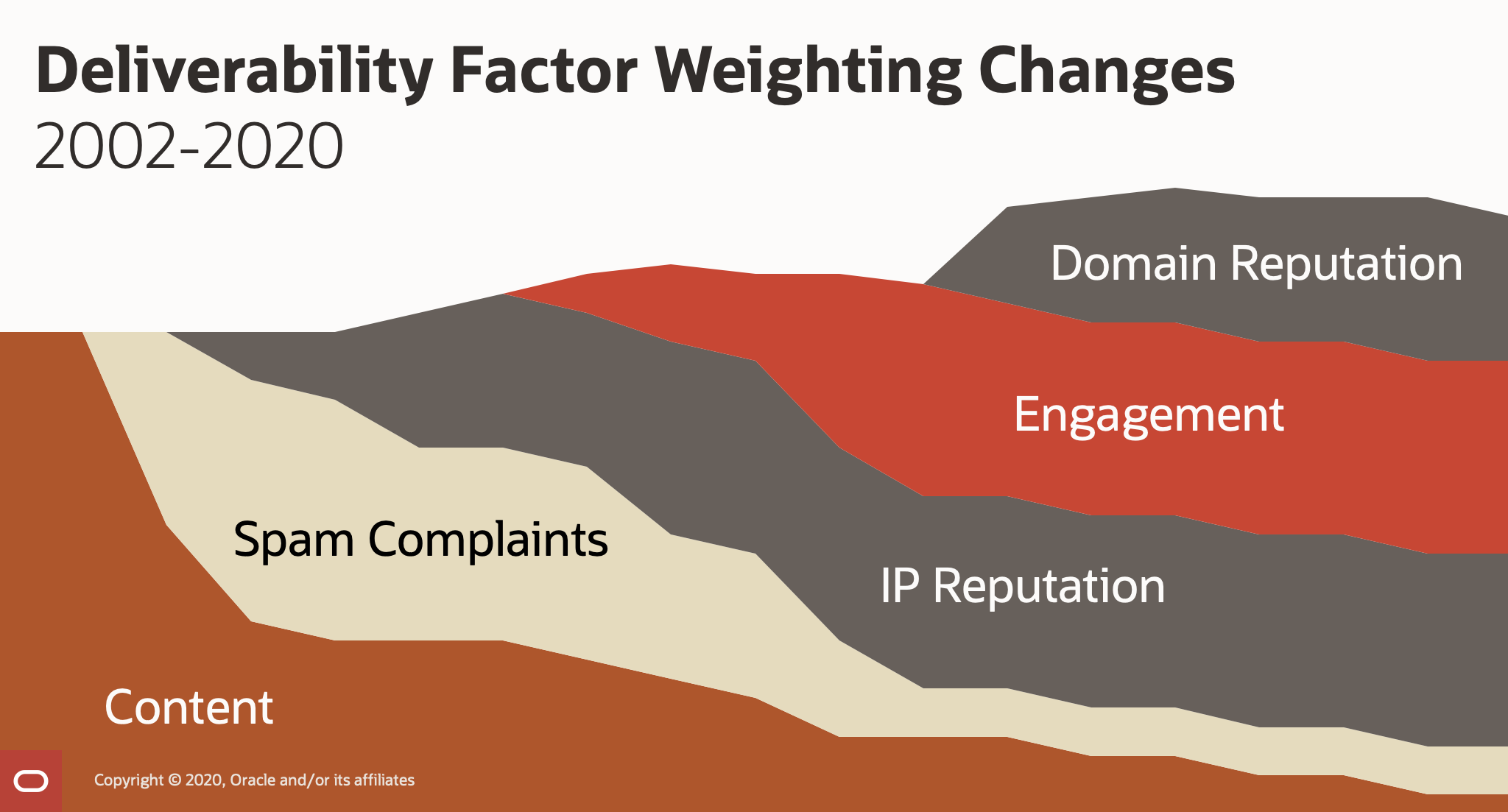Apple’s 2021 announcement of new privacy protections generated mixed reactions. Some marketers feared the demise of email marketing, while others dismissed the announcement as a non-event. The actual result, of course, fell in the middle of those extremes, but the impact to marketers’ analytics, deliverability, and email design have been substantial.
To serve subscribers well and maintain email marketing performance, marketers will need to adjust email marketing activities. Before we discuss those adaptations, let’s talk about exactly what changes Apple is making, keeping in mind that the following descriptions and our recommendations are based on our current knowledge and understanding and may change based on what Apple ultimately releases.
What to Expect from Apple’s Mail Privacy Protection
Apple’s new Mail Privacy Protection applies specifically to the use of the native Mail app on their iPhones and iPads, and the desktop email application.
“In the Mail app, Mail Privacy Protection stops senders from using invisible pixels to collect information about the user. The new feature helps users prevent senders from knowing when they open an email, and masks their IP address so it can’t be linked to other online activity or used to determine their location.” Source: Apple Press Release
During the WorldWide Developer’s Conference announcement, Garrett Reid, Privacy Engineering at Apple provided further details about the Privacy Protection approach.
“Since Mail content may be loaded automatically after delivery, the time of Mail viewing will no longer be correct. And since that content is loaded without revealing people’s IP addresses and without detailed headers, the location and type of device reading the Mail aren’t revealed. And you’ll see your emails as being opened, regardless of if the user read it or not.”
The announced changes will clearly limit tracking of opens, forwards, IP addresses; however, according to MacRumors, it is unlikely that URL tracking methods will be impacted.
“Email senders can still monitor your behavior with tracked links that you will need to be mindful of, but the behind the scenes tracking that you might not notice won’t happen.”
Protection activation
Apple will prompt users to select their Mail Privacy Protection when they open the Mail app for the first time after upgrading to the next version of their operating systems. That prompt will look like this screen shot provided by Apple and AppleInsider.

We expect similar uptake on Mail Privacy Protection as Ad Tracking opt-out, which is roughly 96% in the United States, according to Flurry Analytics. This protection will negatively impact several aspects of email marketing.
Email Opens, Time Stamps, and Forwarding
Marketers may see nearly 100% open rates from Apple Mail recipients. This open rate inflation will apply to any kind of email address including personal addresses such as Gmail, Yahoo, AOL, Outlook, and for corporate addresses if they are connected to the Apple Mail app. Some email users switch between access on different apps or web access to their email, so marketers should be prepared to see data impact across a multitude of access points and will have difficulty separating data due to the loss of device identification.
Additionally, Apple will be blocking forward tracking. If your subscriber forwards an email to another email address, you will not receive any tracking information on the forward.
Device Identification
Reid said that the type of device reading the mail isn’t revealed under the new privacy policy, but it is unclear if any device identification will still be available. If the device is “unknown,” brands may be able to back out Apple’s market share of email opens for the near term by assuming that the unknown device is an Apple email client. Even with Apple masking device data, however, marketers may still learn enough to use in design decisions.
Location Information
While Apple’s new privacy protections don’t allow marketers to collect detailed and accurate location information, they do appear to provide country-level and state-level location data, which allows marketers to continue to use location information to determine whether legal compliance with CASL, GDPR, or CCPA, for example, is needed for a particular subscriber. The Mail Privacy Protection explanation states: “Rather than share your IP address, which can allow the email sender to learn your location, Apple’s proxy network will randomly assign an IP address that corresponds only to the region your device is in. As a result, email senders will only receive generic information rather than information about your behavior.”
Live Content
Live content for email populates when an email is opened, not the time sent. Live content enables a range of timely, relevant email content, including countdown timers, live sports scores, live poll results, and live maps. According to Martech, live content may also be a victim of these privacy settings. “Similarly, real-time content providers such as MovableInk, CampaignGenius.io or Liveclicker will more than likely have to change products like countdown timers and location-based content because the functionality might end for Apple users.”
Impact on Email Marketers and Our Recommendations
All of those changes will affect marketers’ email analytics, inactivity management, send time optimization, subject line optimization, live content, and location data. We discuss each of those issues below, as well as in this on-demand webinar.
Email Analytics
The inflation of opens will likely have the most extensive impact because opens—however imperfect—are the most frequent signal that marketers receive that their emails reach their subscribers and that their subscribers engage with those messages.
Once Mail Privacy Protection is available, opens will no longer be very helpful as a performance metric in email analytics unless there is a new method to identify Apple Mail data and filter it out of performance tracking. This loss may have the beneficial effect of driving marketers to use deeper metrics like clicks and conversions that are much more closely aligned with business success. Use of these metrics may lead to better A/B testing, especially the A/B testing of subject lines, where marketers today often use opens to determine winners.
Opens have been a key performance indicator for media companies, manufacturers, B2B services, and other brands that are more focused on engagement and customer satisfaction than conversions. The loss of that data will have a much larger impact on how they manage and measure their email programs.
The loss of forwards isn’t likely to impact many brands, as it is not commonly tracked. The loss of device information, however, is more impactful. Marketers use device information data to inform their email design strategies, such as determining whether enough of their subscribers will be able to enjoy AMP for Email content, for instance, if they include it.
Our recommendations:
1. Develop a broader set of performance metrics. For email activity, this can include tracking negative metrics such as unsubscribes and spam complaints more closely. In addition, brands have been slowly embracing more subscriber-centric performance metrics, such as subscriber lifetime value. This move by Apple will likely accelerate this trend. It’s also likely to cause more brands to take a more holistic, customer-centric approach, tracking performance metrics that extend beyond emails, such as offline purchases, website visits, account logins, app engagement, and SMS engagement.
2. Create a reliable opens audience. Use device identification analytics to create an audience of subscribers who are known to be using non-Apple email clients. Then, use this audience for testing when opens is a vital victory metric and as a proxy for overall open rate performance.
3. Do a deep dive into your existing data. Before Apple releases this update—likely in September—do a thorough examination of your data, with a focus on the data points that are going away. Note learnings to use in the future.
Inactivity Management and Engagement-Based Segmentation
Over the past decade, email engagement has become a massive component of spam filtering algorithms. Mailbox providers track many engagement indicators, most of which are completely invisible to marketers, such as favoriting an email or placing it in a folder to save. Among the indicators that marketers can see, opens are the most critical because they are the most frequent signal of engagement.

Source: Oracle
To stay out of the spam box, marketers have to keep their engagement rates high. Techniques to avoid the dreaded spam filter include:
- Using a lack of opens and clicks to trigger re-engagement campaigns and, when those efforts fail, to start re-permission campaigns which eventually suppress chronic non-openers.
- Using open and click behavior to send more campaigns to highly engaged subscribers and fewer campaigns to less engaged subscribers.
With opens generally being 10x higher than clicks, opens have been the primary component of triggers and segmentation decisions.
However, under Apple’s privacy changes, many inactive subscribers will appear as openers. This will result in Apple Mail users receiving more promotional emails than they would have otherwise. The change will also likely affect how mailbox providers filter spam.
Our recommendations:
4. Continue your inactivity management efforts. Even though Apple’s changes will mean that far fewer of their subscribers will appear to be inactive based on their open activity, marketers should continue never-active and long-term inactive programs; these re-engagement and re-permission steps are still worthwhile.
5. Broaden engagement metrics. In addition to continuing to factor in email clicks, marketers will likely need to incorporate omnichannel metrics that demonstrate customer engagement, such as offline purchases, account activity, website visits, mobile app activity, and SMS engagement. Using non-email metrics to determine subscriber engagement is somewhat dangerous from a deliverability standpoint. Still, it’s better than relying solely on email clicks, which aren’t a frequent enough signal.
6. Establish new trigger thresholds. Once you have your new engagement calculation, marketers will need to test to determine the best threshold to trigger re-engagement and re-permission campaigns. Matching the threshold of your new engagement model up to your existing opens-based model is likely to yield the safest starting point.
7. Redesign your re-engagement campaigns. The goal of re-engagement campaigns has traditionally been to get an open, as that signaled that there was still someone active on the other end of the email address. After this update, marketers will need the unambiguous signal of a click—whether the recipient clicks to update their preferences, enter a sweepstake, or claim a discount code.
8. Promote preference center updates. If you have a preference center and offer the ability to indicate a preference on email frequency, promote it more aggressively during signup and periodically during the email relationship. If you don’t currently offer this, consider adding it.
9. Pay more attention to your email deliverability. Because of the impact on engagement tracking and inactivity management, it’s a safe assumption that deliverability rates across the industry will decline slightly over time due to this change by Apple. High-volume senders should consider either hiring a deliverability specialist or hiring deliverability consultants. Those who don’t should spend more time monitoring their deliverability.
Send Time Optimization
Send time optimization, or STO, uses a subscriber’s past open behavior to determine the best time to send email to them, and typically results in a 10% lift compared to using a generic send time for all of your subscribers.
When Apple email clients start generating false opens and opens at times that don’t match actual read times, STO will become less accurate and less effective until vendors adjust their products.
Our recommendations:
10. Prepare to pivot if you’re using STO already or in the process of implementing it. For subscribers using Apple email clients with Mail Privacy Protection enabled, open times will generally be within a couple of hours of the time of delivery for subscribers whose Mail apps are open in the background continually refreshing. That will generally reinforce existing STO recommendations. Near-term, that means STO’s ability to adapt to changing subscriber behaviors will be stunted. However, we anticipate over time that STO algorithms will use clicks and other behaviors to validate the best send times, which will override false open signals from Apple. However, if you’re not already using STO, we recommend holding off until your vendor updates their algorithm to avoid having unreliable STO values.
Subject Line Optimization
The winners of subject line A/B tests are often determined by opens, and machine learning-driven subject line recommendation engines also typically optimize for opens. Since opens are a high-frequency signal, optimizing for them has been quick, but it hasn’t been the wisest move since opens don’t have a very high correlation with bottom-of-the-funnel actions like conversions. Email clicks have always been a stronger, though less-frequent signal of subscriber intent, and now marketers have another compelling reason to shift to optimizing subject lines for clicks because of Apple.
Our recommendations:
11. Focus subject line optimization on clicks. Opens will become an increasingly unreliable signal of engagement, especially during the short 2-3 hour windows that many marketers use to determine a winning subject line. Clicks are a smarter approach. For A/B testing, to generate statistical significance, some marketers may need to move from 10-10-80 split tests to 25-25-50 tests, where they send one version of an email to a quarter of their subscribers, a second version to another quarter, and then the winner to the remaining 50%. Other marketers may need to move to 50-50 split tests that focus on validating tactics and approaches that can be used in future campaigns. For subject line recommendation engines, talk to your vendor about using clicks for optimization.
Location Data
Because Apple will be using proxy servers, marketers would be able to pinpoint a subscriber’s location with much precision. However, you’ll still be able to use it to determine compliance with state and national laws. You’ll also be able to use it for broad-based geosegmentation, such as sending an alert to subscribers ahead of a hurricane or blizzard to tell them about store closures or emergency services.
Our recommendations:
12. Collect location preferences. Many brands have historically used IP address locations to guess what their subscribers’ preferred store, service center, or airport would be. The likelihood of a bad guess increases massively with Apple’s update. Instead, ask your new subscribers during onboarding to select a favorite location, or use their first purchase to establish a default.
Live Content in Email
Live content allows for more engaging and relevant content, but the pre-fetching and caching of email content by Mail Privacy Protection will turn real-time content into “recent-time content,” as Movable Ink CEO Vivek Sharma says. While this will generally have little effect on those subscribers who open an email within a few hours of receiving it, those who open it much later will see increasingly outdated content.
Our recommendations:
13. Determine if live content still generates enough of an ROI. With Apple no longer supporting a reliable live content experience, the effort and cost associated with live content may no longer be worthwhile, especially as adoption ramps up into the new year. Watch your performance metrics closely for campaigns where you’re using live content to ensure that the return on investment justifies it.
14. Use AMP for Email for live content. While Apple is blocking live content, Gmail is enabling it via AMP for Email. This change by Apple makes AMP for Email more attractive than it has been, since non-AMP-powered live content now works in fewer inboxes. As a bonus, AMP for Email also enables email interactivity, such as live forms, carousels, and hamburger menus.
What’s Next?
Data deprecation is a hot topic across many areas of marketing and shows no signs of slowing down. Brands and marketers who anticipate the impacts of these trends will be poised to gain ground in their marketplace. Oracle is ready to help. We will continue to follow the rollout of Apple’s Mail Privacy Protection and its consequences and update our recommendations for how you can adapt.
For helping compile these recommendations, special thanks go to Clint Kaiser, Head of Analytic & Strategic Services, Oracle Digital Experience Agency; Daniel Deneweth, Head of Email Deliverability Services, Oracle Digital Experience Agency; Sterling Shew, Principal Product Manager for Responsys, Oracle; and Martin May, Product Management Lead for Infinity Core Services, Oracle.
—————
Need help adjusting to changing privacy rules? Oracle Digital Experience Agency has hundreds of marketing and communication experts ready to help Oracle customers create stronger connections with their customers, partners, and employees, even if they’re not using an Oracle platform as the foundation of that experience. Our award-winning specialists can handle everything from creative and strategy to content planning and project management. For example, our full-service email marketing clients generate 24% higher open rates, 30% higher click rates, and 9% lower unsubscribe rates than Oracle Responsys customers who aren’t.
For help overcoming your challenges or seizing your opportunities, talk to your Oracle account manager, visit us online, or email us at OracleAgency_US@Oracle.com.
Want to better understand your email marketing risks and opportunities, take advantage of our free Email Marketing Assessment. Our experts will check your deliverability, review your email creative, audit your signup process, do a partial competitive analysis, and more. If interested in this free assessment, reach out to us at OracleAgency_US@Oracle.com.
Updated August 2021
